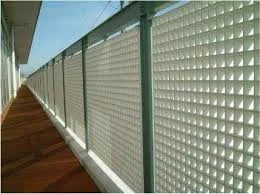
-
 Afrikaans
Afrikaans -
 Albanian
Albanian -
 Amharic
Amharic -
 Arabic
Arabic -
 Armenian
Armenian -
 Azerbaijani
Azerbaijani -
 Basque
Basque -
 Belarusian
Belarusian -
 Bengali
Bengali -
 Bosnian
Bosnian -
 Bulgarian
Bulgarian -
 Catalan
Catalan -
 Cebuano
Cebuano -
 China
China -
 China (Taiwan)
China (Taiwan) -
 Corsican
Corsican -
 Croatian
Croatian -
 Czech
Czech -
 Danish
Danish -
 Dutch
Dutch -
 English
English -
 Esperanto
Esperanto -
 Estonian
Estonian -
 Finnish
Finnish -
 French
French -
 Frisian
Frisian -
 Galician
Galician -
 Georgian
Georgian -
 German
German -
 Greek
Greek -
 Gujarati
Gujarati -
 Haitian Creole
Haitian Creole -
 hausa
hausa -
 hawaiian
hawaiian -
 Hebrew
Hebrew -
 Hindi
Hindi -
 Miao
Miao -
 Hungarian
Hungarian -
 Icelandic
Icelandic -
 igbo
igbo -
 Indonesian
Indonesian -
 irish
irish -
 Italian
Italian -
 Japanese
Japanese -
 Javanese
Javanese -
 Kannada
Kannada -
 kazakh
kazakh -
 Khmer
Khmer -
 Rwandese
Rwandese -
 Korean
Korean -
 Kurdish
Kurdish -
 Kyrgyz
Kyrgyz -
 Lao
Lao -
 Latin
Latin -
 Latvian
Latvian -
 Lithuanian
Lithuanian -
 Luxembourgish
Luxembourgish -
 Macedonian
Macedonian -
 Malgashi
Malgashi -
 Malay
Malay -
 Malayalam
Malayalam -
 Maltese
Maltese -
 Maori
Maori -
 Marathi
Marathi -
 Mongolian
Mongolian -
 Myanmar
Myanmar -
 Nepali
Nepali -
 Norwegian
Norwegian -
 Norwegian
Norwegian -
 Occitan
Occitan -
 Pashto
Pashto -
 Persian
Persian -
 Polish
Polish -
 Portuguese
Portuguese -
 Punjabi
Punjabi -
 Romanian
Romanian -
 Russian
Russian -
 Samoan
Samoan -
 Scottish Gaelic
Scottish Gaelic -
 Serbian
Serbian -
 Sesotho
Sesotho -
 Shona
Shona -
 Sindhi
Sindhi -
 Sinhala
Sinhala -
 Slovak
Slovak -
 Slovenian
Slovenian -
 Somali
Somali -
 Spanish
Spanish -
 Sundanese
Sundanese -
 Swahili
Swahili -
 Swedish
Swedish -
 Tagalog
Tagalog -
 Tajik
Tajik -
 Tamil
Tamil -
 Tatar
Tatar -
 Telugu
Telugu -
 Thai
Thai -
 Turkish
Turkish -
 Turkmen
Turkmen -
 Ukrainian
Ukrainian -
 Urdu
Urdu -
 Uighur
Uighur -
 Uzbek
Uzbek -
 Vietnamese
Vietnamese -
 Welsh
Welsh -
 Bantu
Bantu -
 Yiddish
Yiddish -
 Yoruba
Yoruba -
 Zulu
Zulu
frp duct system
The Importance of FRP Duct Systems in Modern Infrastructure
Fiber-Reinforced Polymer (FRP) duct systems have emerged as a game-changing technology in the construction and infrastructure sectors. Comprising a composite material that combines a polymer matrix with reinforcing fibers, FRP offers a multitude of advantages over traditional duct materials, such as metal and plastic. This article dives into the significance of FRP duct systems, their benefits, applications, and their growing prevalence in various industries.
One of the primary advantages of FRP duct systems is their exceptional resistance to corrosion. In environments that are prone to chemical exposure, such as wastewater treatment plants, chemical processing facilities, and marine applications, traditional materials often deteriorate quickly, leading to costly repairs and replacements. FRP’s resistance to both chemical and environmental factors ensures a longer lifespan, reducing maintenance costs and downtime.
The Importance of FRP Duct Systems in Modern Infrastructure
Another noteworthy benefit of FRP duct systems is their insulation properties. The material significantly reduces thermal conductivity, which helps in maintaining the temperature of the transported fluids or air. This characteristic is especially vital in HVAC applications, where energy efficiency is paramount. By minimizing heat loss or gain, FRP duct systems contribute to lower energy consumption and higher overall system efficiency.
frp duct system

FRP duct systems are also customizable, allowing for a wide range of shapes and sizes to meet specific project requirements. Whether it’s round, square, or rectangular ducts, the flexibility in design makes it possible to fit these systems into complex installations seamlessly. This adaptability ensures that engineers can optimize designs without compromising the duct’s performance or integrity.
In terms of environmental impact, FRP duct systems are often considered more eco-friendly. The composites can be manufactured with recycled materials and are known for their durability, which leads to less waste over time. Additionally, as energy-efficient products, they contribute to overall reductions in greenhouse gas emissions during their operational life.
Applications of FRP duct systems span numerous sectors, including construction, aerospace, automotive, and industrial manufacturing. In HVAC systems, for instance, FRP ducts help in climate control and comfort within commercial spaces. In the aerospace industry, the lightweight properties of FRP are utilized for optimal fuel efficiency in aircraft design.
As the global focus shifts toward sustainable and durable materials, the adoption of FRP duct systems is likely to continue rising. Their benefits far exceed those of conventional materials, making them a preferred choice for engineers and architects aiming to create resilient infrastructure.
In summary, FRP duct systems represent a significant advancement in duct technology. With their corrosion resistance, lightweight nature, energy efficiency, and versatility, they are paving the way for modern infrastructure that is not only effective but also sustainable. As industries evolve, the reliance on innovative solutions like FRP will undoubtedly play a crucial role in shaping the future of construction and engineering.
Latest news
-
Exploring the Benefits of Top Hammer Drifter Rods for Enhanced Drilling PerformanceNewsJun.10,2025
-
High-Precision Fiberglass Winding Machine for GRP/FRP Pipe Production – Reliable & Efficient SolutionsNewsJun.10,2025
-
FRP Pipes & Fittings for Shipbuilding - Corrosion-Resistant & LightweightNewsJun.09,2025
-
Premium FRP Flooring Solutions Durable & Slip-ResistantNewsJun.09,2025
-
Premium Fiberglass Rectangular Tanks Durable & Lightweight SolutionNewsJun.09,2025
-
Tapered Drill String Design Guide Durable Performance & UsesNewsJun.09,2025









